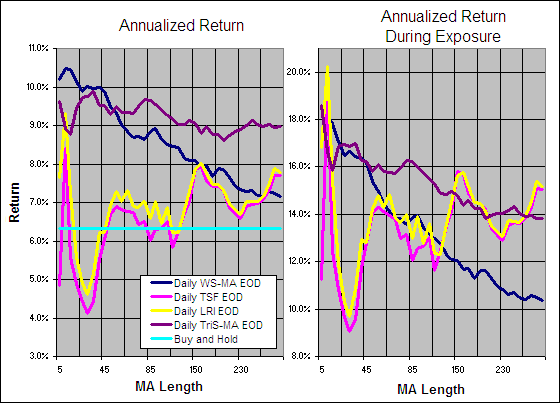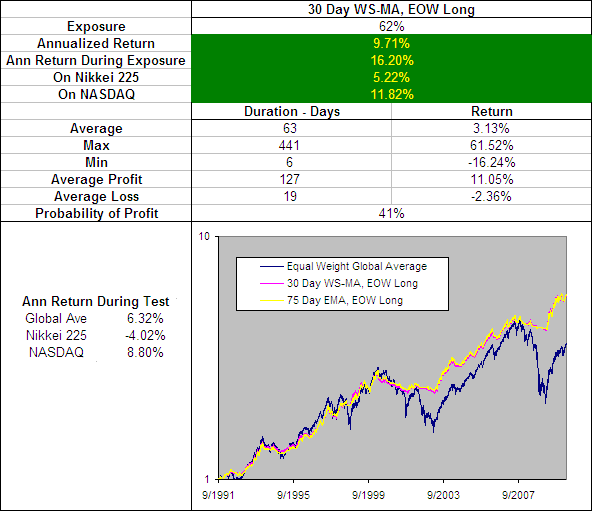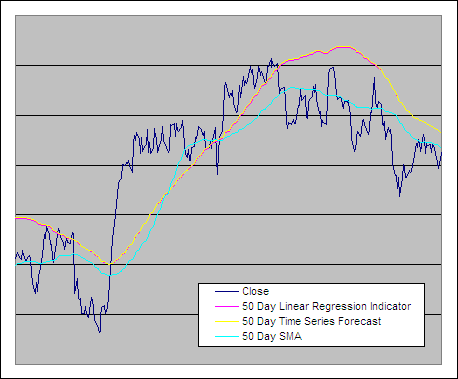In this round of testing we will be looking at a mix of different smoothing methods and averages: The Moving Linear Regression or Time Series Forecast (TSF) and The Linear Regression Indicator (LRI) which aren’t actually moving averages but can be used in the same way. Plus Wilder’s Smoothing AKA Smoothed MA (WS-MA) and the Triangular Simple MA (TriS-MA). The aim is to identify if any of these indicators are worth using as a trading tool.
We tested each indicator going Long and Short, using Daily and Weekly data, taking End Of Day (EOD) and End Of Week (EOW) signals with smoothing periods varying from from 5 – 300 days or 60 weeks.~ These tests were carried out over a total of 300 years of data across 16 different global indexes (details here).
.

.
Above you can see the annualized return statistics for each indicator. The first thing that you will notice is that the LRI and TSF produce very similar results and neither of them are very good. So for providing buy signals in this fashion the Time Series Forecast and The Linear Regression Indicator are knocked out cold in the first round.
The returns generated by the TriS-MA are reasonable but they are not good enough to out perform the EMA’s results so the Triangular Simple Moving Average is also knocked out of contention. (Note – It didn’t dawn on us that the TriS-MA is almost identical to the Triangular Weighted Moving Average until after we had already tested it).
Wilder’s Smoothing produced some good returns when the smoothing period was less than 45 days but the performance dropped gradually to almost 7% as the length was extended. The EMA exhibited similar behavior but bottomed out around 8% so while Wilder’s Smoothing is effective in this application, the Exponential Moving Average is still King.
.
Best Average of the Group – Long
.
We performed a total of 948 tests in this round; half of them on the long side and half on the short. Rather than simply selecting the indicator with the greatest returns over the test period we identified the best for going long using the following criteria:
- Annualized Return > 9%
- Average Trade Duration > 29 Days
- Annualized Return During Exposure > 15%
- Annualized Return on Nikkei 225 > 3%
14/357 Averages made the final cut (see spreadsheet) but we selected the 30 Day Wilder’s Smoothing with End of Week Signals as the ultimate winner:
.
 .
.
Above you can see how the 30 Day WS-MA, EOW Long performed during the test period compared to the 75 Day EMA, EOW Long which was selected as the most effective Exponential Moving Average in a previous test. The WS-MA with this particular smoothing period produced almost identical results to the EMA but didn’t offer any benefits.
Upon further testing we found that despite very different calculation the WS-MA and the EMA are actually the same indicator. Simply double the WS-MA period and subtract one to find the equivalent EMA. For instance a 38 period WS-MA is identical to a 75 period EMA.
.
.
